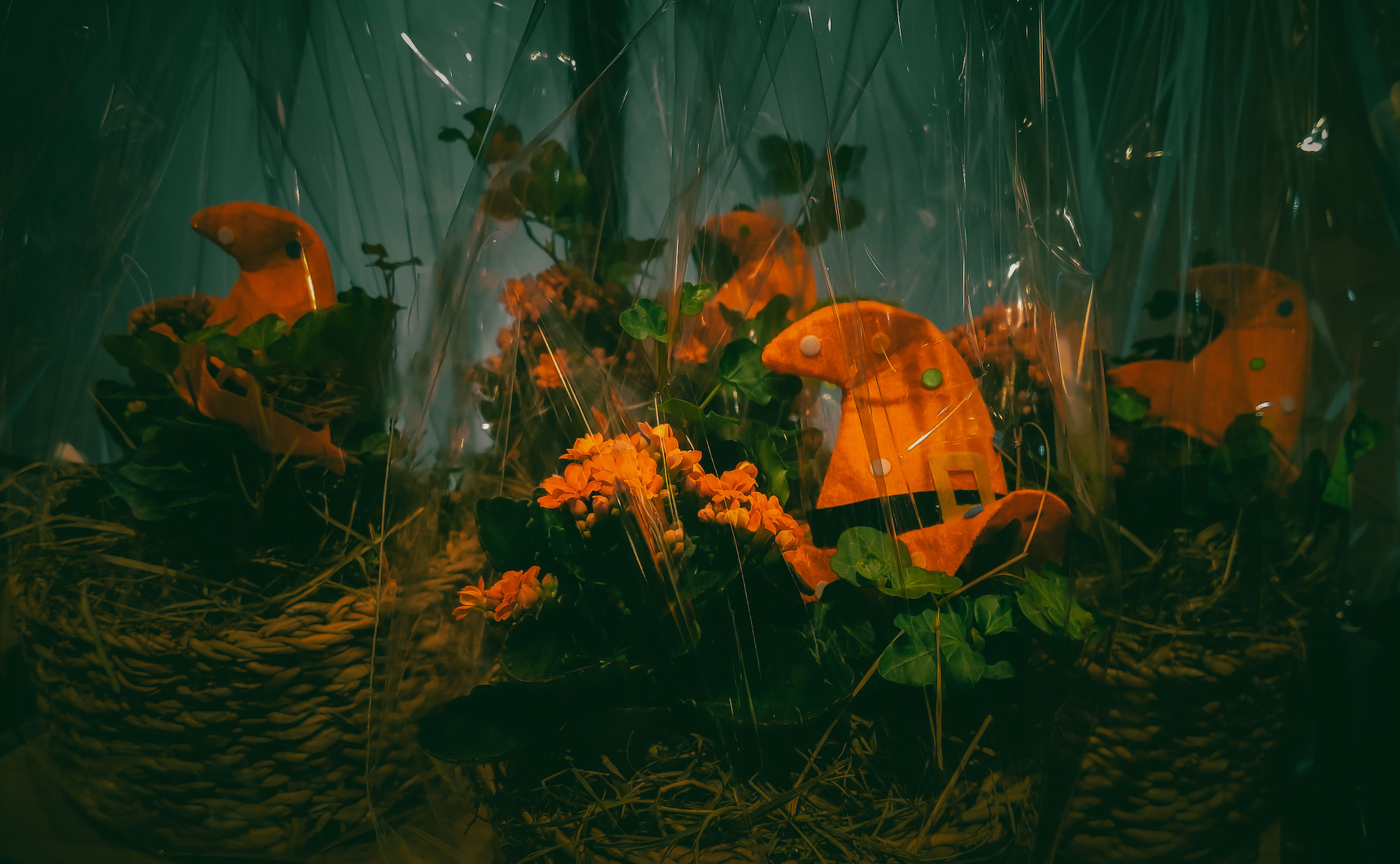Gifted learners often exhibit exceptional versatility and creativity in using resources to explore and develop their ideas, often in unconventional ways. Michelle recalls the day one of her gifted students, 12-year-old Mika, came to her distraught, clutching her latest art project—a beautifully imaginative and intricately coloured pencil drawing of an alien-inspired botanical garden. “My art teacher gave me a C!”, she exclaimed. “She said I didn’t follow the assignment and should have just drawn a basic flower bouquet still life!”
Mika’s experience of having her creativity constrained by formal assignment rubrics is all too common for gifted learners. While there can be room for creativity in some assignments, creativity is often constrained in many school-based assessments. Standard curricula often don’t leave room for imagination and innovation that frequently comes naturally to gifted students. Often teachers, many without the requisite expertise, understanding, and skills to nurture these creative abilities, find it easier to rein gifted students back into the pace of their peers, and keep within the constraints of standardised tasks.

There are at least 400,000 gifted school students across Australia, where giftedness is said to be aptitudes across four mental domains and two physical domains; intellectual, creative, social, perceptual, muscular, and motor control. The many unique traits of gifted students, such as verbal precocity, detailed imagination, exceptional problem-solving, and innovative, divergent, and creative thinking, require educational opportunities that extend and enrich the development of these aptitudes. In general, teachers struggle to support the learning needs of gifted students for a variety of reasons: lack of teacher training, limited resources, curricula and time constraints, limitations in understanding what giftedness is, and in understanding the capabilities of gifted students. Like most problems in education there are no simple answers.
While we are wary of technical solutions to education problems, the recent availability of generative AI (GAI) may offer some respite for teachers as well as support for all students. Since late 2022 when ChatGPT was released by OpenAI, GAI has been seen as, among many things: problem, solution, distraction, or challenge for educators. What GAI clearly is, however, is an addition to the education landscape. It’s availability has changed the student teacher relationship.
That’s the question that had us experimenting with large language model chatbots like OpenAI’s ChatGTP and Anthropic’s Claude. Based on Maslow’s figurative analogy, ‘only having a hammer makes us see every problem as a nail’, Michelle crafted prompts for Claude to come up with some uses of a hammer that had nothing to do with nails. As the conversation evolved, the back-and-forth chat built on the differing uses of a hammer, such as prying, crushing, stirring, and scraping, depending on the need at hand, she pushed Claude further, to ‘think’ outside the box, and how might we counter the argument that this hammer analogy tries to make about only having a hammer makes seeing every problem as a nail. Claude produced a cascade of unpredictable and unconstrained ideas—from writing songs about hammers, to theorems for optimal hammering biomechanics, to avant-garde hammer-themed art installations. Michelle prompted Claude to generate 101 uses for a hammer other nailing. The GAIs responses, produced instances of what Stuart Kaufmann calls the adjacent possible. As Kauffman puts it: “things can be combined to make new things.” For the gifted student there are 101 adjacent possibles to build on and work from. For the teacher of a gifted student, they no longer need to spend time generating 101 adjacent possibles.
Following the hammer and nail exchange, Claude suggested that “Sometimes a simple tool used skilfully by an ingenious person is the best approach, and even if you only have access to one tool, you can still choose how and when to use it in different ways. You are not limited to one approach.” Or to draw on a point made recently by David Autor, “If a traditional computer program is akin to a classical performer playing only the notes on the sheet music” (hammer and everything’s a nail) “AI is more like a jazz musician — riffing on existing melodies, taking improvisational solos and humming new tunes” (101 adjacent possibles).

Michelle’s small experiment demonstrated that sometimes a simple tool (GAI) used skilfully by an imaginative person (gifted student or teacher) is the best approach, even if you only have access to one (GAI) tool, you can still choose how and when to use it in different ways (activities and tasks). You are not limited to one approach (formulaic prompts).
Adjacent to this experiment, is the ’Closed World Principle’, whereby concentrating on the internal aspects of a problem, while limiting options, can lead to more creative outcomes. Rather than being prompted to ‘think outside the box’, this principle upholds the usefulness of looking inwardly in the context where the problem is occurring. Unfortunately, the experiment of applying this principle with GAI did not elicit an interesting array of responses, although Claude did finish off by stating “Constraints can breed creativity when we learn how to manipulate them methodically”.
The prospect of apps that support and encourage custom creativity for the interests and passions of gifted students from writing to coding, to quantum physics is evident. Unlike fears of AI encouraging cheating, we see GAI as a resource that requires human resourcefulness, ingenuity, and ideation in exploring adjacent possibles, unknown unknowns. With an unexpected recommendation from Claude to “manifest positive change through mindful, compassionate hammering” underscoring that ethics and the development of emotional intelligence have a place in using GAI.
GAI outputs rely entirely on thoughtfully crafted prompts. That’s where teachers have an important role—guiding gifted students in harnessing GAI, rather than letting it steer aimlessly or in potentially problematic directions. Responsibly nurturing the creativity of gifted young minds remains a profoundly human endeavour.
Like any experiment with GAI, it can become dated quickly as wave after wave of new and better GAIs are released, like Open AI’s Sora or Google’s Gemini Ultra, which in turn further adds to the now many thousands of GAI-based apps. What is not changed is the importance of a re-negotiated student teacher relationship, one that is free of hammer and nail thinking.
The field still needs much more research, experimentation, and open mindedness to realise GAI’s potential in gifted education. The thought of Mika’s delight in using AI to suggest ideas for her next alien garden artwork left us hopeful. We all have more to learn from the wonderfully quirky, wildly creative minds of gifted students like Mika. With GAI at the fingertips of educators and gifted learners, making unconventional connections and innovative problem-solving beckons.
 Dr Michelle Ronksley-Pavia is a Senior Lecturer in Special Education and Inclusive Education and the Program Director for the Graduate Certificate in Special Education in the School of Education and Professional Studies, and a researcher with the Griffith Institute for Educational Research (GIER). Dr Ronksley-Pavia is an internationally recognised award-winning researcher working in the areas of gifted education, twice-exceptionality (gifted students with disability), inclusive education, learner diversity, special education, and initial teacher education. Her work centres on disability, inclusive educational practices (e.g., differentiations), and gifted and talented educational practices and provisions. She has been awarded Teaching Excellence Awards for her work in undergraduate and postgraduate primary and secondary preservice teacher education programs. Dr Ronksley-Pavia is also disabled and a disability advocate
Dr Michelle Ronksley-Pavia is a Senior Lecturer in Special Education and Inclusive Education and the Program Director for the Graduate Certificate in Special Education in the School of Education and Professional Studies, and a researcher with the Griffith Institute for Educational Research (GIER). Dr Ronksley-Pavia is an internationally recognised award-winning researcher working in the areas of gifted education, twice-exceptionality (gifted students with disability), inclusive education, learner diversity, special education, and initial teacher education. Her work centres on disability, inclusive educational practices (e.g., differentiations), and gifted and talented educational practices and provisions. She has been awarded Teaching Excellence Awards for her work in undergraduate and postgraduate primary and secondary preservice teacher education programs. Dr Ronksley-Pavia is also disabled and a disability advocate
 Chris Bigum is an Adjunct Professor at the Griffith Institute for Educational Research and lives an unretired academic life on the Gold Coast where he can access swimming pools and surf beaches all year round (he denies any and all undinistic tendencies). He has been teaching about and researching the various interactions between computing and related technologies and formal education policy and practices since the early 1980’s.
Chris Bigum is an Adjunct Professor at the Griffith Institute for Educational Research and lives an unretired academic life on the Gold Coast where he can access swimming pools and surf beaches all year round (he denies any and all undinistic tendencies). He has been teaching about and researching the various interactions between computing and related technologies and formal education policy and practices since the early 1980’s.